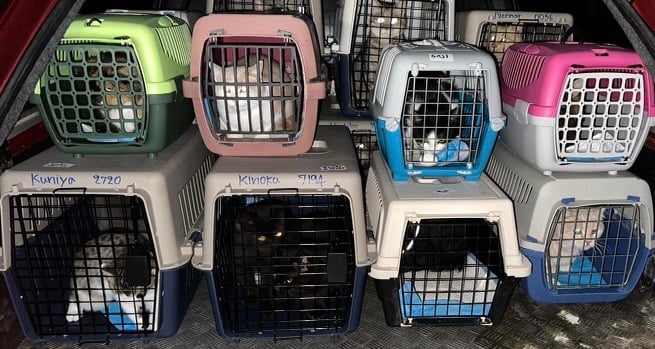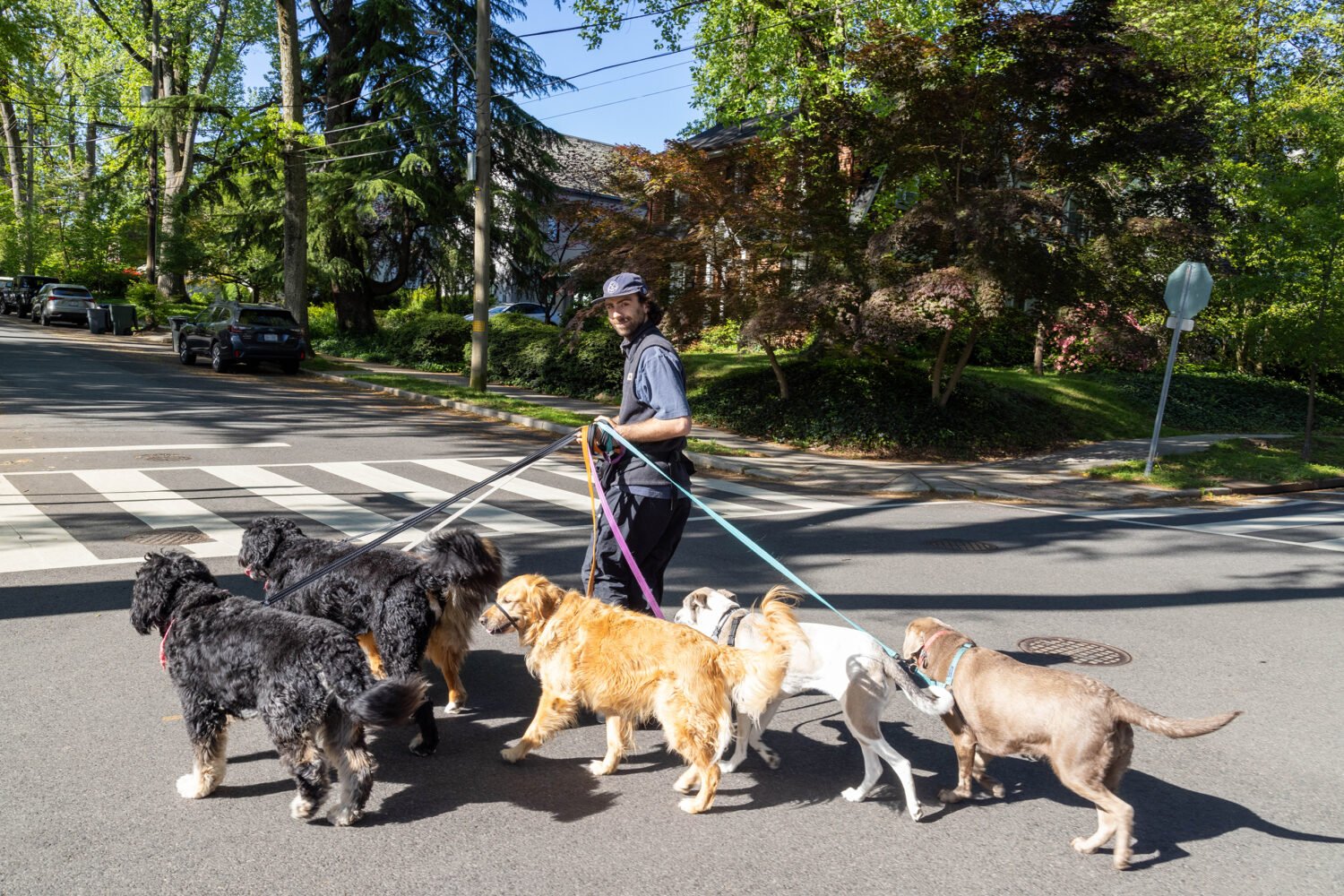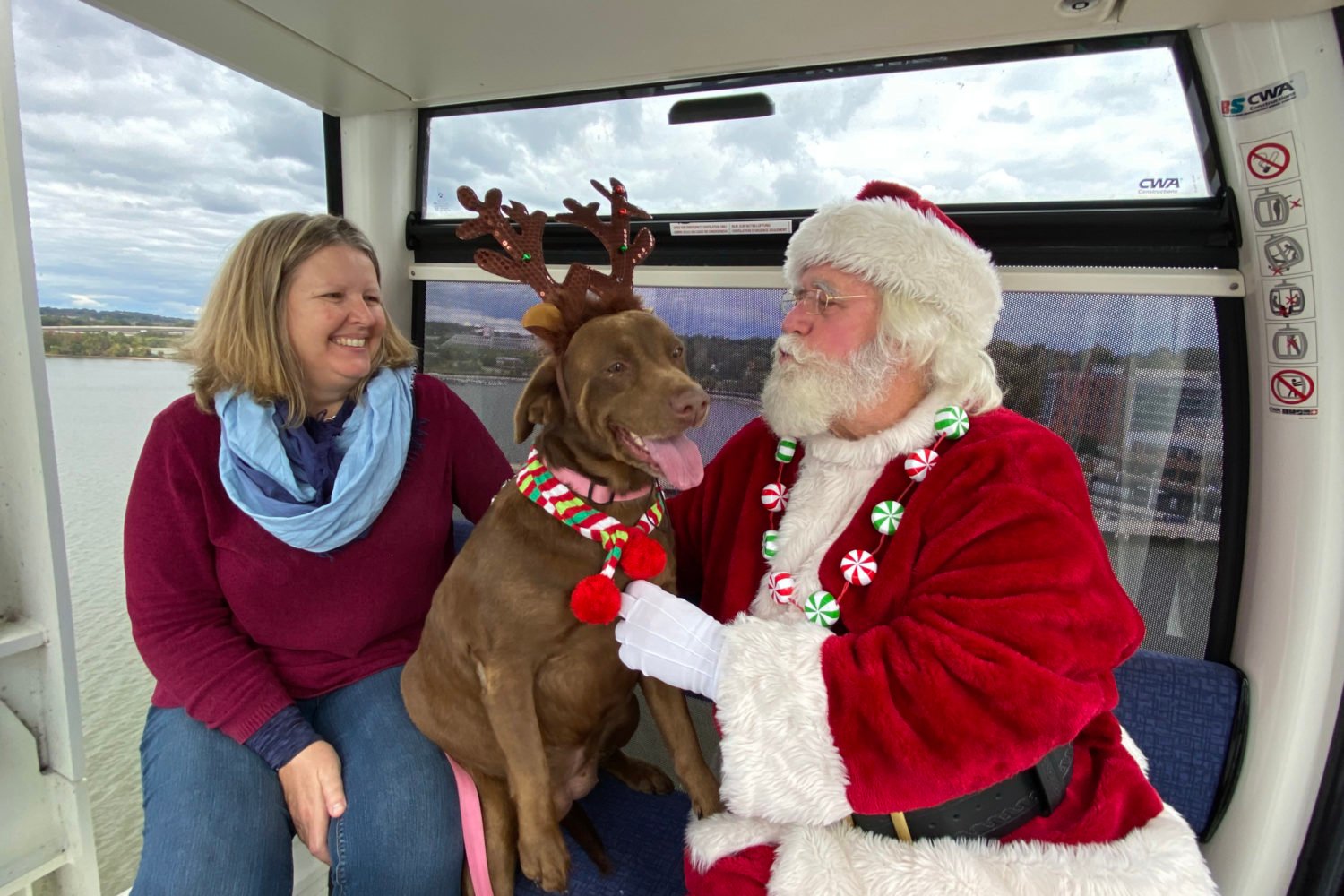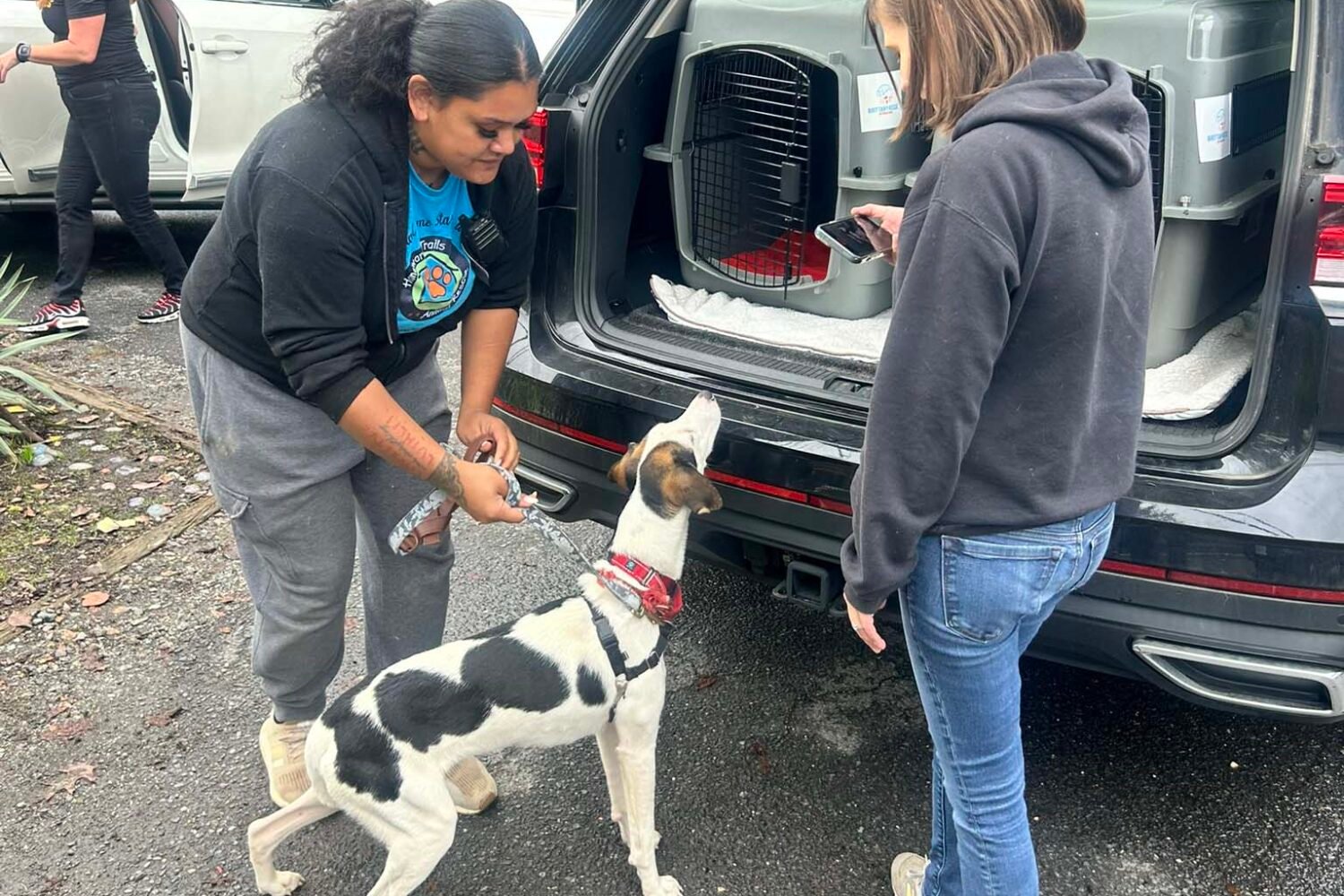Many miles after they crossed into Ukraine from Romania, Sue Bell and Shana Aufenkamp arrived at an emergency shelter that has been an oasis for animals that have been exposed to devastating bombings, starvation, and desolation. Bell and Aufenkamp’s mission: Help the animals at the shelter, and bring as many kittens as possible back to Virginia.
Bell is the executive director of Fairfax-based Homeward Trails Animal Rescue and Aufenkamp is a volunteer with the organization. When they arrived at the warehouse-turned shelter, Bell writes in an e-mail, it was “hard to imagine that war, destruction and death” were nearby.
They brought supplies, four bags’ worth, including vaccinations, insulin, carriers, toys, and scratching boxes for cats. After spending a week in the shelter, they spent more than 40 hours traveling back to Virginia with eight kittens. Twenty-four more arrived last week.
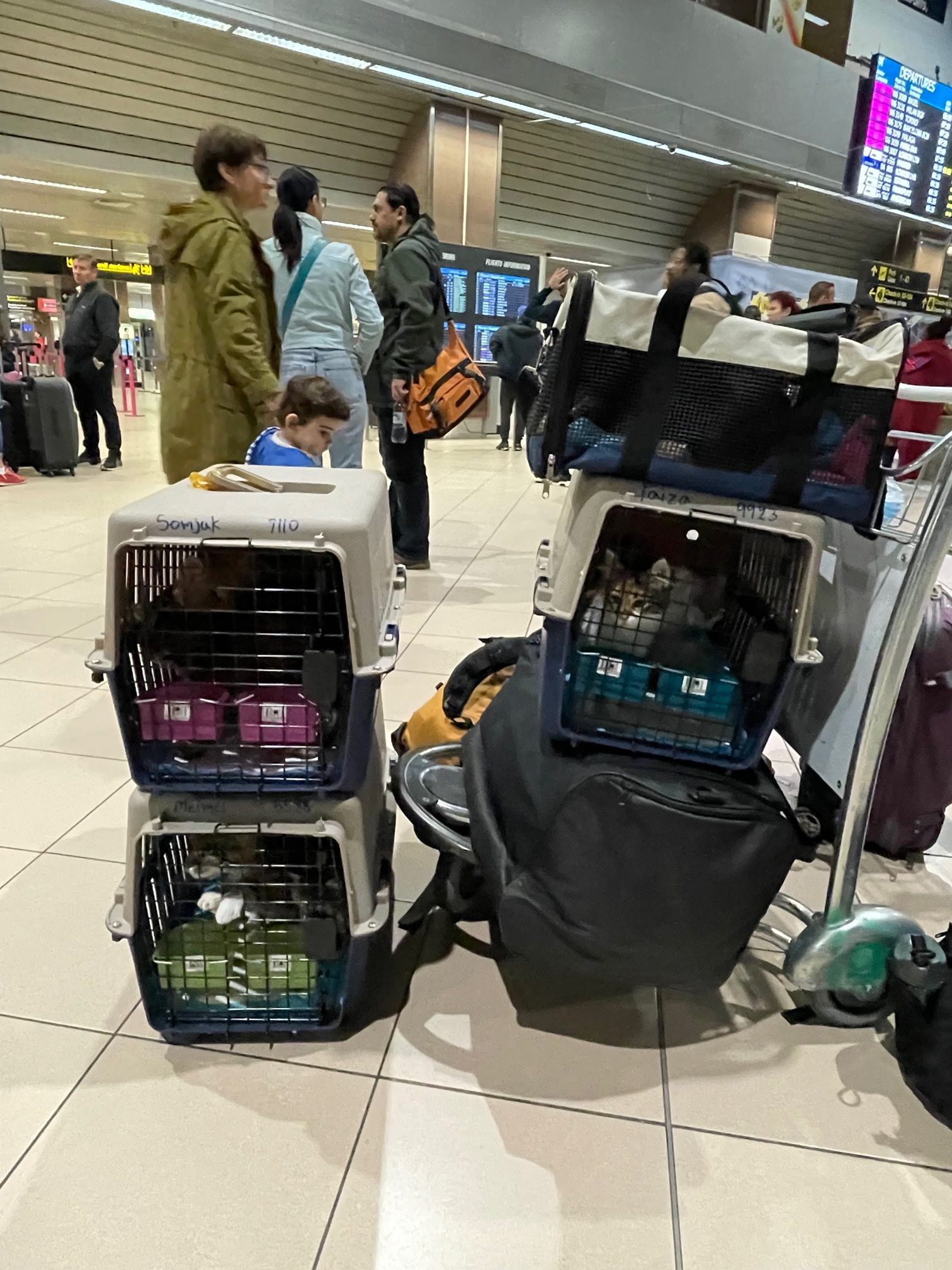
Bell and Aufenkamp are no strangers to emergency operations to save animals; Homeward Trails helped to rescue some of the thousands of beagles from the Envigo breeding facility in Cumberland County, Virginia, when it was shut down. Not two weeks after attending an event on Capitol Hill to endorse legislation that would require adoption processes for all animals used in breeding facilities, Bell was on a plane headed to another devastating sight.
The threat of war and winter has weighed heavily on all volunteers at the shelter, knowing that any animals that don’t get taken in soon will face the full power of a Ukraine winter and a strong likelihood of starvation.
The UK organization Breaking the Chains rescues animals from war zones and recently constructed this shelter to house rescued animals and give volunteers from around the world a place to stay. It’s no resort: Sleeping quarters for the humans and the dogs are close, meaning even the slightest disturbance can set off a chorus of howls. Even so, some volunteers have vowed to stay until the end of the war, whenever that may be.
The shelter isn’t the endgame, though. A volunteer group of former British military officers goes on extraction missions every few days to rescue animals from occupied or targeted areas. They suit up in protective gear and drive up to 12 hours under the cover of nightfall to rescue as many animals as they can. They’ve found animals in streets and in empty shelters, abandoned by people who fled violence.
One shelter they reached in Borodyanka housed about 485 dogs before the Russian forces invaded and it was abandoned. When the team was able to reach the shelter six weeks later, the scene was heartbreaking. Only 150 dogs were alive, many only so from eating dogs that had already died.
My hope in this is not to just save the animals, but to enlighten people that animals are victims of war in a really horrible, horrible way.
With these rescue missions happening every few days, the need for space is never-ending. The facility is well-equipped and constantly growing, but with no comprehensive exit strategy for most of these animals, the extraction teams face the wrenching decision of whether to leave animals behind.
Bell and Aufenkamp went to Ukraine with the intention of bringing back as many animals as they could, but they are limited to only transporting cats to the US. In July 2021 the CDC banned the importation of dogs from 113 countries labeled ‘high-risk’ for rabies, including Ukraine. The ban, which is set to expire in January 2023, was renewed in June. Owners and organizations can apply to have an international dog enter the US, but they face intense regulations.
The ban was implemented in an attempt to “ensure the health and safety of dogs imported into the United States and to protect the public’s health against the reintroduction of canine rabies virus variant (dog rabies) into the United States,” according to the CDC’s website. Dog rabies has been eradicated in the US since 2007, but in 2020 the CDC reported a significant increase in fraudulent vaccination paperwork, from 300 instances to 450. Now, dogs from countries labeled ‘high-risk’ can only be transported to the US if approved for a CDC Dog Import Permit.
Dave Daigle, associate director of communications at the CDC, told Washingtonian that instances of fraudulent paperwork have declined since the ban, because paperwork is being reviewed prior to dogs arriving in the US.
Applying for the permit is not easy. Before they’re eligible for a CDC Dog Import Permit, dogs vaccinated in other countries must be at least six months old, have a microchip, provide a valid foreign rabies vaccination record and a valid rabies serologic titer from an approved laboratory, and have an arrival appointment at one of five CDC entry points in the US. There, they will be revaccinated and quarantined for 28 days. All in, Bell tells Washingtonian the estimated cost is about $2,000, saying nothing of the hours it would take to coordinate all of this. Comparatively, the cost of transporting a cat right now is a few hundred dollars.
With these restrictions, it’s not feasible for Homeward Trails to bring any dogs back, Bell told Washingtonian. “Some [dogs] need specialized medical attention for wounds and would do so well in the US,” Bell wrote from Ukraine. She shared that one husky, Phoenix, was found with his feet missing—possibly cut off by Russian soldiers. He needs prosthetics, but will have to wait until a rescue can be found for him. Until then, Bell says, he uses a cart or “hobble[s] along on his back nubs.”
“His playful sweet personality despite his cruel treatment is a reminder of just how amazingly forgiving these animals are,” Bell says.
If Americans were able to take dogs from Ukraine, Bell says, “it would be a game-changer.” Even if only 20 dogs were able to come over, she says “that not only gets those 20 dogs over here in homes, but it frees up spaces for 20 more dogs.” The space is key—when shelters aren’t able to craft exit strategies for the animals they bring in, they “end up becoming hoarders” and treatment worsens.
“My hope in this is not to just save the animals, but to enlighten people that animals are victims of war in a really horrible, horrible way,” Bell says. “For people out there who love animals, there are ways to help.”
Adoption rates skyrocket during emergency situations. When Bell went to rescue animals after the devastation of Hurricane Katrina in 2005, she says people’s interest in volunteering, donating, and adopting was much higher than usual. She expects that if Americans were able to adopt dogs from Ukraine easily, there would be a lot of interest.
While in Ukraine, Bell says more than 100 animals were rescued by the extraction unit from a shelter in a threatened region and taken to Germany, a country that has been helpful in taking in both dogs and cats. However, the situation is tightening even more as some countries that had been accepting these dogs previously have recently begun to restrict importation. Canada announced in September that dogs from countries deemed to have a high risk of rabies will be prohibited until further notice. In April, the UK announced a similar ban.
Taking the dogs in might not be an option for sympathizers, but there are other ways to help animals in the war-torn region. There are animals that are not being taken in, but are being cared for by agents at the border of Ukraine and Romania, Bell says. The animals have food and water from what she saw, but she worries that without spaying and neutering the dogs, they will overpopulate.
“If those numbers grow,” she says, “those animals will certainly be rounded up and killed.”
Homeward Trails is now raising funds to spay and neuter the dogs, in coordination with a shelter in Romania. The group also intends to ship more cats over to the US, if it’s able to find homes for those already brought.
Gizmo is a cat Bell decided to bring back right away. Gizmo has clubbed feet and no ears, which a vet has determined is due to over- and in-breeding.

“She is on pain meds and will likely need ongoing medical care. She would have never survived on her own there, but she is AMAZING.” Bell writes to Washingtonian.
Bell says she’s excited to already see interest in the new arrivals. The eight that came back with them are adjusting well—two, Mipha and Malinka, have already made their debut at local cat cafe Crumbs and Whiskers, and applications are flying in, Aufenkamp tells Washingtonian. Two others have been already adopted, and three from the group brought over last week have already been set up with foster homes.
While some of the kitties, like Gizmo, will need owners who are prepared for expensive vet bills, Bell says they welcome first-timers and work with adopters to understand their lifestyle and find the cat that would be the best fit for them.
“There’s usually a cat out there for every person.”

